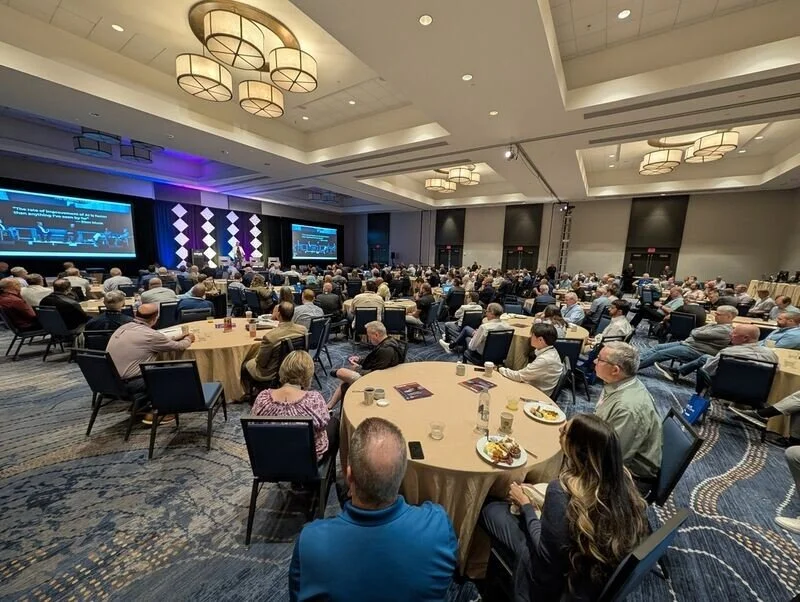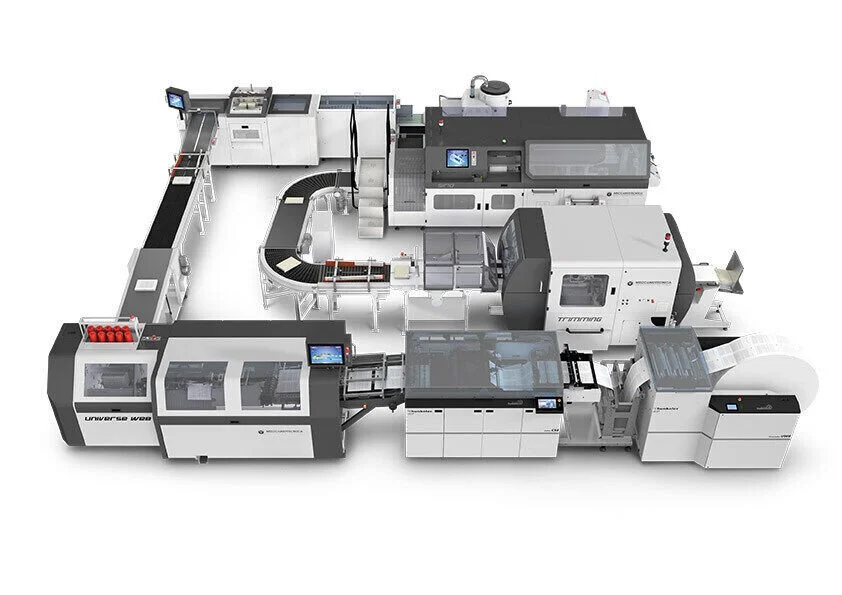What About the Other 30%?
Mark Pomerantz - Founder of SalesWisdom
It’s become a well known data point among sales and marketing leaders and their teams:
According to the 2024 B2B Buyer Experience Report, we continue to see the following:
“B2B buyers are nearly 70% through their purchasing process before engaging with sellers”
This is obviously a major change from not too many years ago. But, have B2B sellers (OEMs) adapted and changed their process to be aligned with this? It’s clear to marketing leaders that reaching their audience now requires a different thought and action process. Because, like just about everything else, availability of information on the internet has changed all the rules.
But once buyers have reached out to you (“And 80% of the time, it’s the buyers who initiate the first contact”), what are the most important priorities for sellers to focus on and provide, in order to succeed during the remaining 30% of the journey?
In other words, for the business of capital equipment sales and marketing, what is the relevant sales process for 2025? What are the key issues and assurance points? If 70% of the process has been completed in advance, why does the remaining 30% seem to take longer than the entire 100% used to?
We can debate if the 70% number is accurate for any given industry, or the differences between a $100k and $1 million sales campaign, or new technology versus replacement technology. Instead, let’s focus on some of the universal factors in today’s capital equipment selling environment.
The #1 issue that executive buyers face today for capex decisions is the requirement to minimize risk. Understanding this from an individual salesperson’s perspective, all the way through executive levels for B2B sellers, is critical. Why is that?
Because in a market where minimized risk is #1, how great or unique or fast or high quality your technology is takes a back seat to other factors. What actions OEMs are seen to be taking or offering to address these factors will make the difference in building the executive buyer’s confidence for a minimized level of risk in their investment. ROI is a given for any capital investment. It's the confidence and 'certainty' of being protected from failure or under achievement that separates the candidates.
Although opex related factors such as cost of consumables, cost of service, and rates for financing will always play an important part in the decision process, it’s rare that any one of these will be the ‘silver bullet’ that sellers are hoping for.
Let’s take a step back for a moment and look at what some of the traditional steps in the process have been, and how do they play a role in a sales strategy for today’s market.
Ink Jet Summit - 2025
For many years in the print industry, BIG events like Drupa in particular, drove a lot of technological decisions. In today’s rapidly moving reality of digital hardware, software and materials advancements, even before AI entered the picture, waiting 4 years for vendors to introduce new technologies, or buyers to make strategic decisions around that schedule, is just not feasible. Changes in technology and applications move too often and too quickly.
This change regarding BIG event driven decisions has been evolving for the last 15 years. Mega-vendor events such as Dscoop and thINK have been successful for many years. But more recently, a growing successful trend for the broader market has included single day VIP Open House events, regional on-the-road versions, more specialized and segmented shows (i.e. Amplify, Global Pouch Forum) and of course the various and wildly successful conference venues that are not shows in the traditional sense, such as Ink Jet Summit, Digital Packaging Summit, Wide Format Summit. The recently created Printing United has dared to bring all segments of the print industry under one roof, annually. This has clearly filled a void that many didn’t realize even existed.
All this adds up to plenty of opportunities for buyers to be engaged, at arm’s length, in the 70% phase of the process. With a wide choice of information-based events readily available across the span of the annual calendar, and little duplication among them, the centralized decision process of the past has been de-centralized and can be approached as a series of more casual learning experiences. That’s critical to understand because often, sellers believe the attendees are there for the 30% section of the journey.
Some may be, but don’t assume the majority are.
BOBST Digital Expert 340
Recently I was invited to and attended the BOBST Atlanta Competence Center Open House in suburban Atlanta Metro. This is one of many examples of how individual technology vendors are handling single day, individual events for their VIP audience. The need for these centers, these events, and how to make them successful, is clear at BOBST.
“We are very selective about our marketing investments for shows and events” states Matt Bennett, Business Unit Director for BOBST NA. Being an active participant in all 4 major categories in packaging; Flexible, Folding Carton, Corrugated & Labels, this is both a challenge and an opportunity. “BOBST NA has invested significantly in our own facilities that are used for education and training for our customers”.
But clearly, it doesn’t end there. In addition to events that showcase their wide span of digital, hybrid and conventional technologies, Bennett informs us there is “a higher level than ever before of testing and validation” done at the center before buyers make their final decision.
How many vendors out there are exhausted from multiple rounds of testing?
How many forecasts get stuck or pushed back on this issue alone?
This is risk minimization in action.
Let’s move on to the perspective of a print service provider. DIY Media Group helps musicians, authors, and artists to monetize, distribute, and promote their creative work both online and off. Based in Pennsauken NJ, DIY’s main operating businesses include Disc Makers, BookBaby, and OnPress Book Printing. For their book manufacturing operations, DIY has invested significantly in technologies that improve their print and finishing process.
But it doesn’t come easy.
To minimize risk and maximize results, how do they see the process and what did they do?
Meccanotecnica Universe-Sirio Book Finishing Line
“The clarity of your own vision” is the most important factor to determine and follow, according to Nick Smith, Senior Director of Operations for BookBaby and OnPress.
“Our vision was always to build as much automation as possible. That means to be able to manage velocity, reduce touches, reduce time to customers in an on-demand world.”
But what were their key criteria to decide what technologies to invest in that reduced risk?
One major factor was support. But not necessarily in the same classic 'break-fix' way that most consider. What Smith terms as the “reliance model”, to be completely reliant on the OEM for all crucial service and support functions, was “frustrating”. They wanted more control of their own process. They wanted the first responders to be on their payroll, not someone else’s.
More control = minimization of risk.
Smith also states that they were deliberately looking for OEM vendors that had their business segment (in this case, on-demand book manufacturing) as a key target market.
They didn’t have time to educate their suppliers. More risk reduction.
To make it all work, DIY has invested in their people. With a small staff of engineering talent, they recognize that different skill sets are required to maximize their results. “Investment in the right people allows for a higher yield”, something that is more tangible than just the rated speed of a machine, according to Smith.
So, considering the two previous scenarios we have looked at, what exactly is the role of the OEM service and support teams on this journey of the remaining 30%? Especially, considering the need to minimize risks?
“Our focus is on predictive downtime” reports Jim Rivest, Vice President of Support Services at SCREEN Americas. This is the key building block to move away from the reliance model. This requires a lot of internal reporting, more customer driven maintenance, and more automation of operator steps. Rivest believes SCREEN was likely the first to offer this hybrid model for the high-speed ink jet web market.
In practice, this allows for a tight regimen of preventative maintenance visits, scheduled in advance, based on the data that tells them what the best times for these activities are.
“We build the lowest downtime attributes into our equipment, so we can hire the best engineers to support customers only when required” says Rivest. This is quite different from what the reliance model has looked like historically.
Once again, the end result for the buyer is minimized risk.
SCREEN Truepress JET 560HDX
Taking that a step further, Mark Schlimme, Vice President of Marketing at SCREEN Americas, tell us that the Customer Success team at SCREEN “is focused on directly helping their customers increase usage, reduce cost of ink”, and have an overall happy and productive experience. Their new and expanded Innovation Center in Elk Grove Village, IL also plays a role in helping customers both discover and validate their investment up front.
In 2025, very little of these activities are brand new. But from both the buyer (PSP) and seller (OEM) perspective, how you envision your end result, and what you prioritize to achieve it, can be the leading predictor of success. With a primary focus on minimized risk and being reflective of both the financial and technological times we are in, executive buyers can be more confident in their wisdom, and the maximized results, of their investments.
“The clarity of your own vision”. That really says it all. Thank you, Nick Smith, for that.
About the Author
Mark Pomerantz is a 40-year veteran of the print industry, primarily with OEM technology suppliers serving print service providers. Mark now operates independently through his company, SalesWisdom, providing services such as fractional sales, marketing, and special projects.






